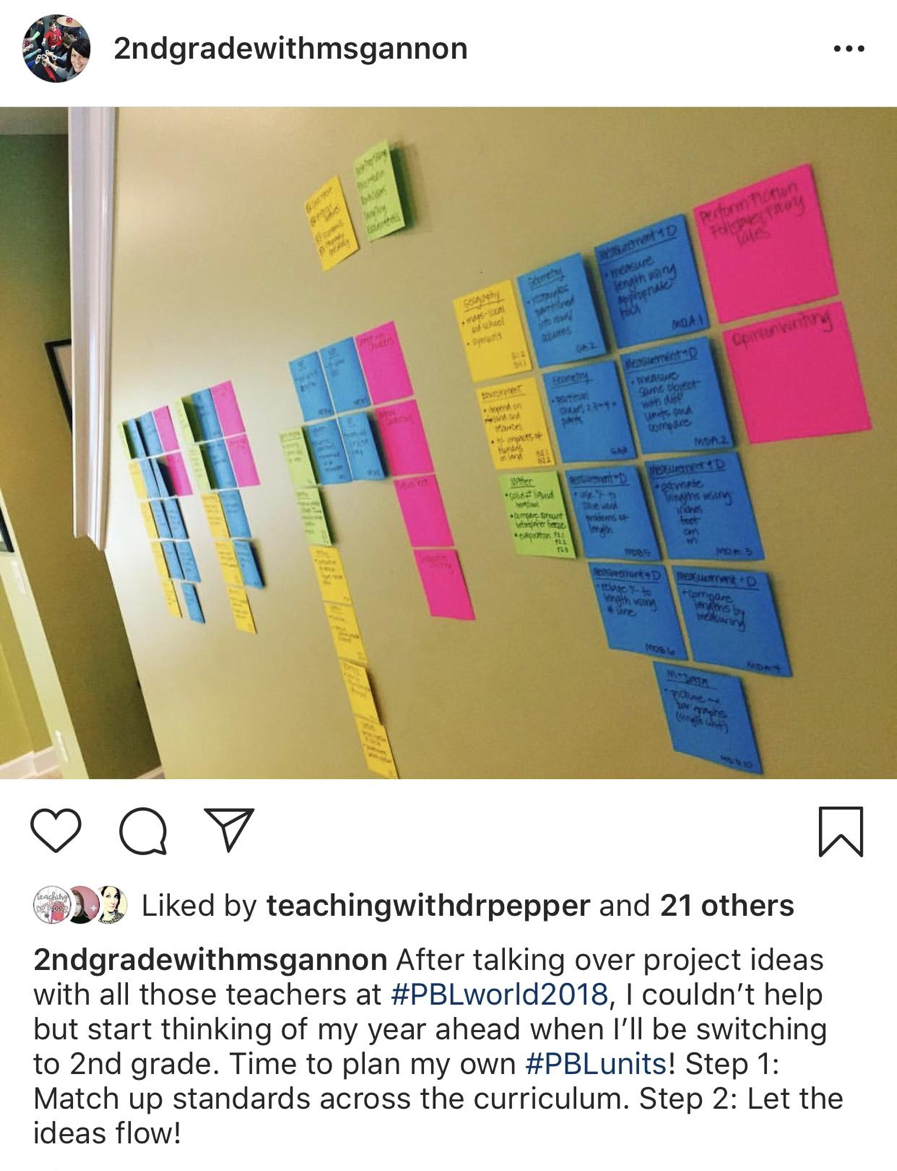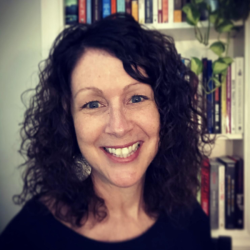
If you’re anything like me, as spring break inches closer, you start thinking ahead to the next school year. It’s not always realistic to try something new when half of the year has already passed, so you start to come up with a list of “I’m totally going to do that next year!” ideas.
One thing I’d like to propose for your list is a yearlong plan that includes ideas for cross-curricular PBL units.
This is a great time to start thinking about how your content overlaps because you’re right in the thick of teaching it all. The detailed planning can come later when you have more time on your hands, but if you let this simmer over the next few months, all kinds of great ideas can emerge.
One approach for yearlong planning that I tried last summer, as I transitioned to a new grade level, was to organize the year using sticky notes on a wall. I didn’t make all of the decisions in one sitting, but rather laid it out and then came back to revisit and make changes as I thought more about the year ahead. Some things never moved, but there were many smaller changes that helped create a better overall flow and led to great ideas for PBL units.
The image below is a photo of the wall that I shared on Instagram while I was planning. I got lots of questions about it, and that ultimately lead to this blog post.
So what does that process look like? Start with standards...
 Start by writing each of the standards on a separate sticky note. No need to write out the whole thing; just include the label and enough to give you the gist of the skill or content the standard focuses on. Using a different color for each curricular area is a great way to visually separate the content and help keep things straight.
Start by writing each of the standards on a separate sticky note. No need to write out the whole thing; just include the label and enough to give you the gist of the skill or content the standard focuses on. Using a different color for each curricular area is a great way to visually separate the content and help keep things straight.
When you get to the language arts standards, focus on big topics like narrative writing, connecting with characters, and folktales. The individual standards for things like punctuation and grammar are not at play with this kind of yearlong plan and can really overwhelm the process. Fill those in later when you get to the more detailed planning within each quarter.
Once all the standards are written down, you are ready to start laying it all out. You’ll want to begin with the content area that has the least flexibility, perhaps because you are required to follow a program or specific scope and sequence.
For me, this was mathematics. I laid out the math standards for the four quarters in four separate columns on the wall, leaving plenty of space in between where the other content could be filled in. (These are the blue sticky notes in the photograph.)
Connecting Subject Areas
The PBL units I am drawn to typically revolve around science or social studies standards, so my next step was to add those. I looked for any connections that could be made between the math and the sciences. Our social studies standards in financial literacy and economics were a good match for skills related to money in math. Science standards about weather patterns and measuring changes in weather paired nicely with measurement and data standards for graphing and telling time.
As these started to fall into place, I began to consider the big chunks of language arts and filled those in as well. There will be, of course, standards that don’t really match up to anything. Don’t get too caught up on that. Find an open spot for them or place them in the quarter when you typically teach them. Surely there are things you like to cover at specific times of the year, so you don’t have to abandon that thinking.
Standards related to citizenship and culture, for example, work well at the start of the year when we are establishing our classroom community, so I placed those in the first quarter. While we are all getting to know more about each other, this presents an opportunity to write personal narratives and read stories from a first-person point of view, and that could lead to a great PBL unit about your new community and the individuals that make it special. As you are working through this process, you are likely to discover opportunities like this for cross-curricular PBL units. This is not to say that you have to commit to planning out all of them, but the idea is to get you thinking about what pairs well and can lead to a great PBL opportunity.
Collaborating with Colleagues
You can certainly do all of this on your own, but the best approach would be to engage in this process with a grade level partner or, even better, your whole team. There is a real value in talking this over with a colleague, because collaboration always turns good plans into awesome ones. My teammate, Becky Farrell and I created a digital version of our yearlong plan several years ago when we first started teaching together. We spent an afternoon at her apartment, snacking and talking over how we could connect the very long list of standards we were expected to teach. In the coming years, as we added new members to our team, we adjusted the plan and worked together to develop PBL units that helped us address the standards in a more thoughtful, concise way.
And, so, whether you prefer a “sticky notes all over the wall” or digital version of this planning process, I challenge you to dig in. Not only will it help you become more familiar with what you teach and how it can all blend together, but it can also reveal some PBL opportunities you hadn’t thought of.
Want to learn more about PBL? Check out our books.

